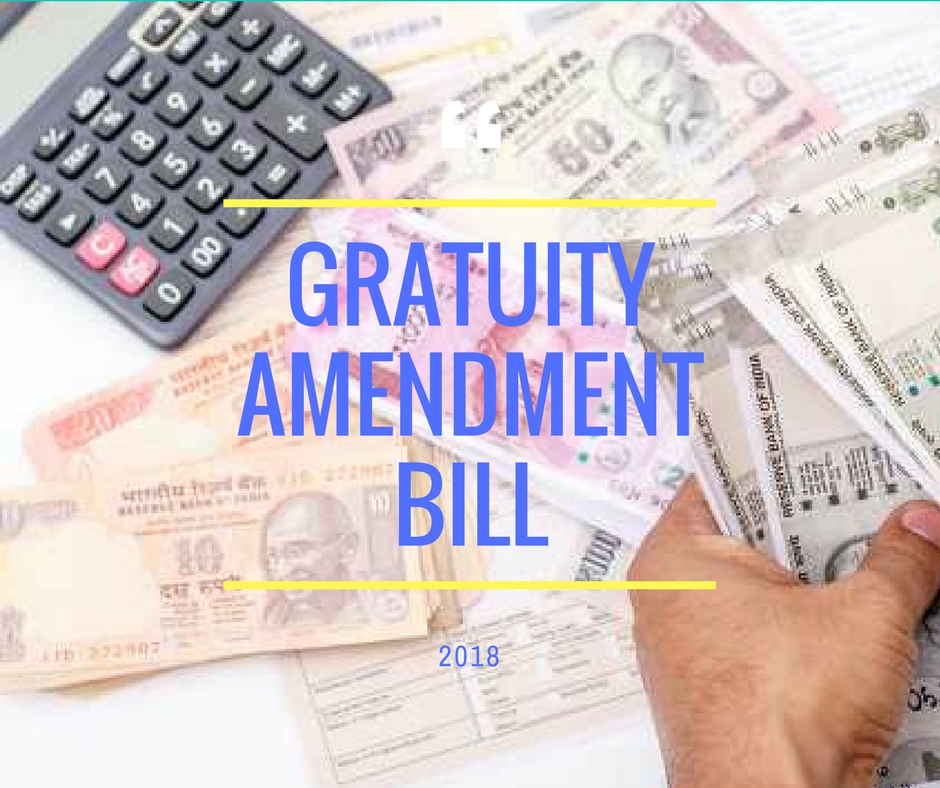The Payment of Gratuity Act, 1972 is an important social security legislation for the wage-earning population.
What has been a pain point for many workers across public and private sectors is the disparity between pay and perks. However, the Payment of Gratuity (Amendment) Bill, 2018 that was passed by the Parliament on March 22, 2018, is a great step in bringing them on an equal pedestal. The Bill ensures harmony amongst employees in the private sector and the public-sector undertakings/autonomous organisations under the Government that are not covered under CCS (Pension) Rules.
The Bill not only covers employees across sectors, but also takes care of women going on maternity leave. Standing true to its purpose of providing social security to all post retirement—whether retirement is a result of superannuation, or physical disablement or impairment of vital parts of the body — the Payment of Gratuity Act, 1972 is an important social security legislation for the wage-earning population in industries, factories and establishments. It applies to establishments employing 10 or more people.
Gratuity, in simple terms, is a part of the salary, which is paid by the employer to an employee when someone leaves the organisation after having spent at least five years there. Mostly saved for retirement purposes, gratuity is tax-free under the Income Tax Act.
Here are the various benefits it brings to workers across sectors:
Raised gratuity for private-sector workers: With the new Bill in place, private-sector employees will also now be entitled to receive a higher amount of gratuity at par with their counterparts in the Government sector. From the existing cap of 10 lakh, now private workers will also be able to receive tax-free gratuity of up to Rs 20 lakh, same as their government-sector counterparts, who after the implementation of 7th Central Pay Commission, were eligible for Rs. 20 Lakhs
James Thomas, country manager, Kronos Systems India, says, “The enhancement of tax-free gratuity payout of Rs 20 lakh from the current Rs 10 lakh will benefit both employers and employees. It’s a potential bonanza for lakhs of employees working in the organised sector and is likely to encourage more people to join the formal sector in the country and provide more stable work environments for employers with a reduced churn.”
However, in order to be able to achieve the upper limit of gratuity, that is, 20 lakh on retirement, someone with a salary of Rs 10 lakh per annum will need to work for about 41 years.
Calculation of service for women on maternity: The Bill envisages amending the provisions related to the calculation of continuous service for the purpose of gratuity in case of female employees who are on maternity leave. In line with the Maternity Benefit (Amendment) Act, 2017 enhancing the maximum maternity leave period to 26 weeks, the Payment of Gratuity (Amendment) Bill recommends that the maternity leave of 26 weeks will be considered as continuation of service for the purpose of calculating the amount of gratuity.
While this may be one significant move in terms of encouraging more women to return to work after the maternity break, Sonal Arora, vice president, TeamLease Services, feels otherwise. She says, “Though, the provision to allow the Government to fix the period of maternity leave for female employees is a little perplexing ; not only is it completely unrelated to gratuity law but now that India is one of the most progressive countries in this respect—with the increase in maternity leave effective last year—no further upward revision of the leave period is required in the foreseeable future. And downward revision is not going to be appreciated or acceptable either. Therefore, this provision was not really required.”
The Bill was passed by the Rajya Sabha on March 22, and the Lok Sabha on March 15, 2018. The official announcement also claimed scope for further revisions, stating that after enactment of the Act, the power to notify the ceiling of the amount of gratuity under the Payment of Gratuity Act, 1972 shall stand delegated to the Central Government. This will allow revision of the limit from time to time, keeping in view the increase in wage and inflation and future pay commissions.




5 Comments
Will it be effective from 01-01-1986 in tune with central govt empoyees
Effective date of applicability is not clear. Central and State Government employees allowed enhanced gratuity wef 01.01.2016. This bill was proposed to give equal benefits to private sector employees also and same is approved. It means this must be applicable from same date as allowed to Government employees to avoid any discrimination. Clarification in the matter is required.
Dear Sir.
My self Bhikhu C.Patel. retired under VRS on 19.2.2016.
Joined in B. O. B. On 8.11.1976.
Birth Date is 1.6.1957
Sir. Whether myself is eligible to get this benefit means enhanced gratuity ceiling w.e.f. 1.1.2016 or not?
Waiting for your suitable/proper reply per return.
some of employer not given the benefit at present and also not benefit of provident fund and employees’ state insurance benefits, bonus, gratuity and other compensation in case of accidents or death, while at work.
Is it justified for the Govt. to create disparity in implementation of enhanced gratuity between govt. employees & govt. owned companies (PSUs and Pvt. sector companies)? Whether govt. is right in this direction? On one side this govt. says SAB KAA SAATH SAB KAA VIKAS? At this point we have to think that we are living in India where the govt. itself plays politics over the legitimate dues of employees. All are not equal. They are not bothered about the dues whether legitimate or otherwise.